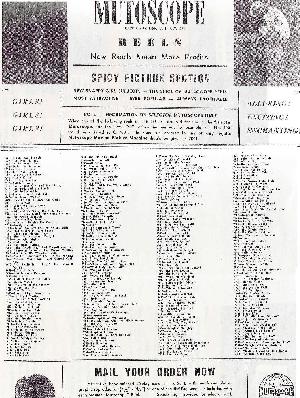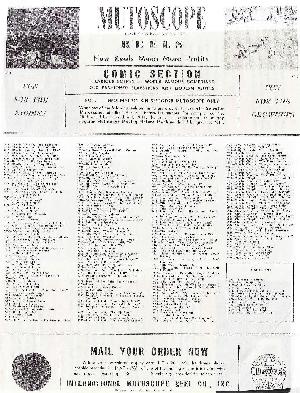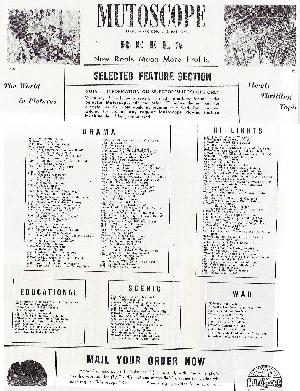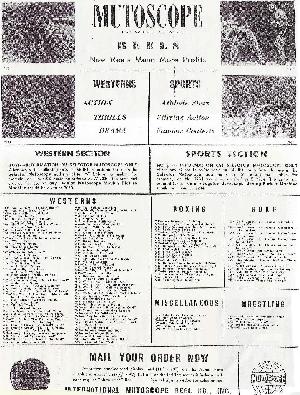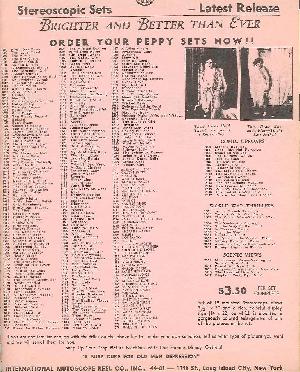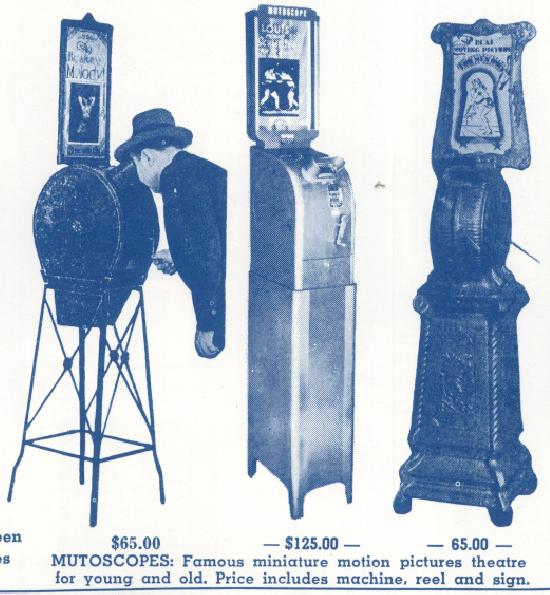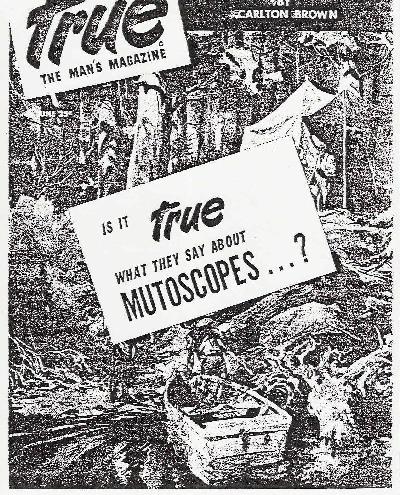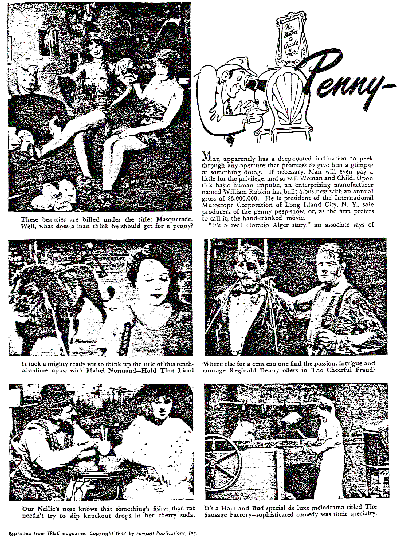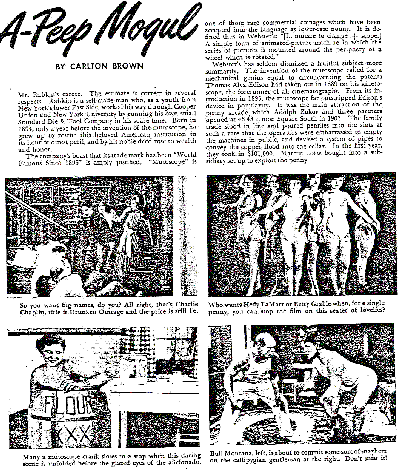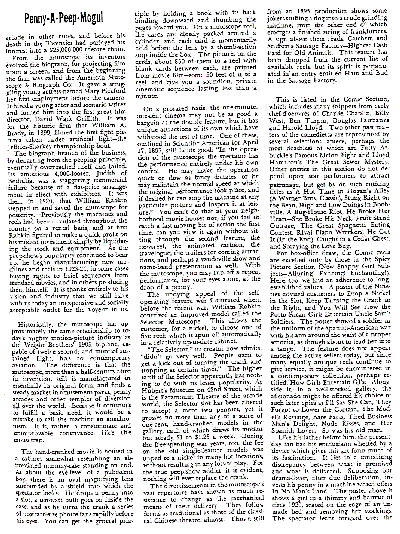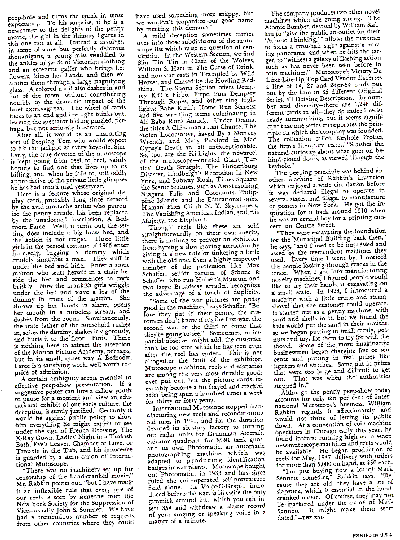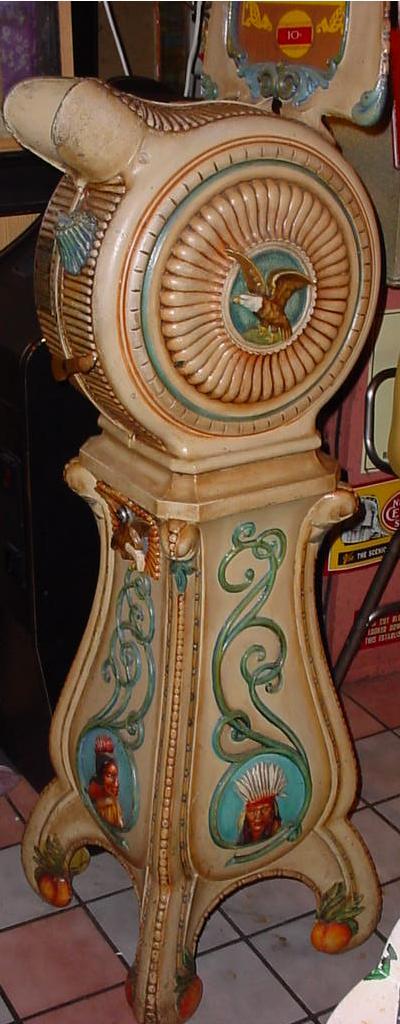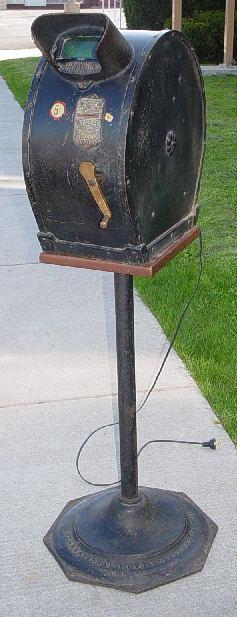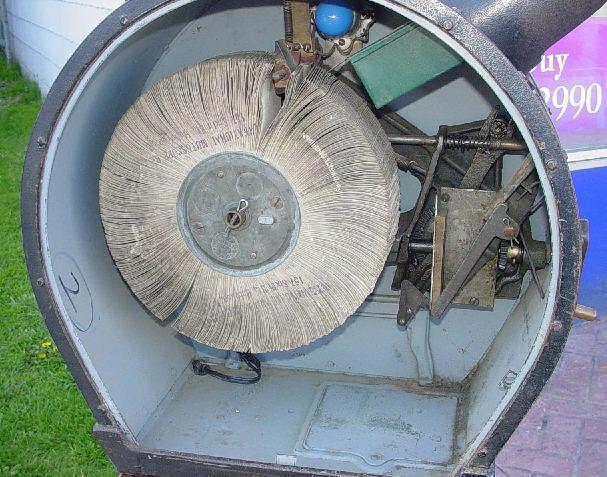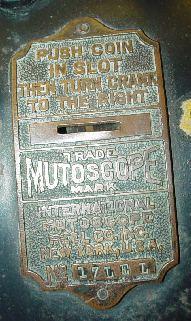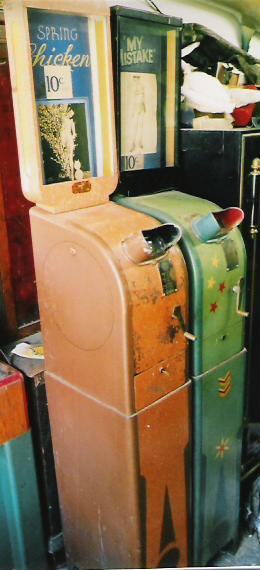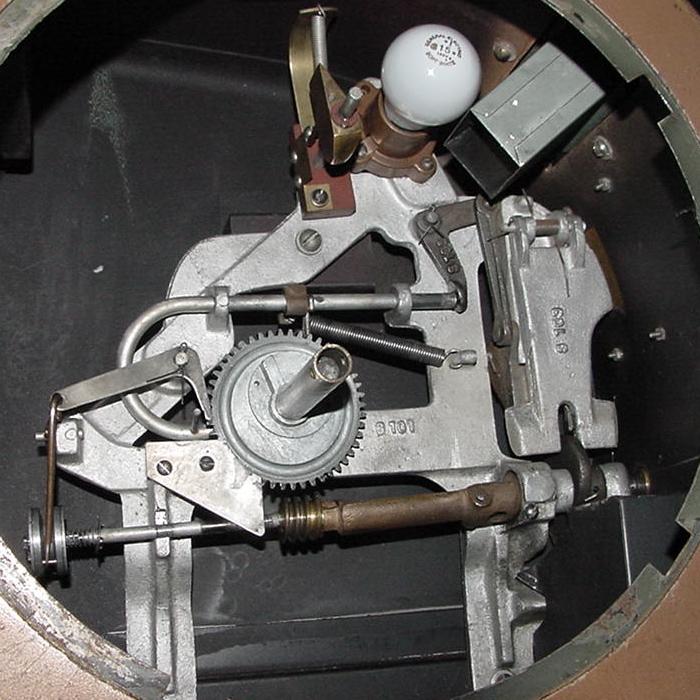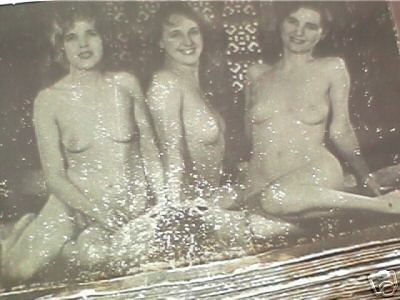Description: Movie Viewer, American Mutoscope & Biograph Co. / Mutoscope International. Player inserts a coin which engages the gears to a hand crank on the outside of the viewer. As the player turns the handle, a light turns on illuminating the moving pictures. The reel of about 850 still card pictures flips by, giving an animmated movie. The player can control the speed of the film, and can stop the animation any time for a closer look. After a full revolution of the movie reel, the gears disengage, and the light goes off. The user can no longer view anymore of the reel until another coin is inserted.
Bill Rabkin era 1926 to WW2 style Mutoscope advertising - click to enlarge.
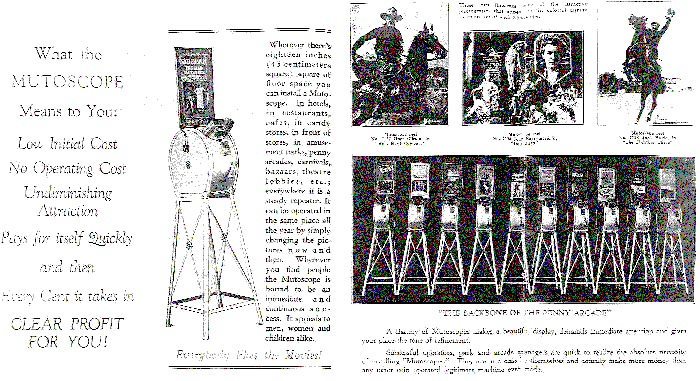
In about 1895 American Mutoscope and Biograph Company began producing the coin operated picture movie viewer. The earliest versions of the Mutoscope movie viewer were made of wood in a very squarish looking box. By about 1900, Mutoscope changed to a cast iron viewer, known as the "clam shell" Mutoscope. This style of viewer was produced until about 1909, when production halted. But around 1926, Bill Rabkin purchased the rights to manufacture Mutoscope machines again, and formed a new company called "International Mutoscope Reel Company". From about 1926 until 1949, they produced Mutoscope machines using the same style card reels as the earlier machines. These viewers were no longer cast iron, but used sheet metal, and had an open frame or pedistal stand.
Bill Rabkin era 1926 to WW2 style Mutoscope advertising - click to enlarge.
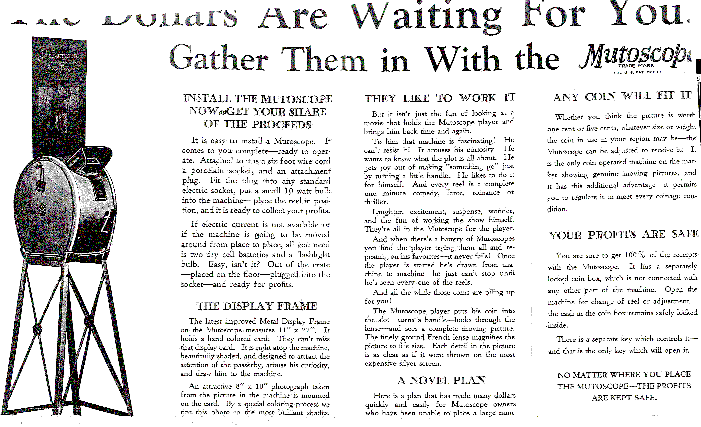
Around 1950 (after WW2), the Mutoscope viewer was slightly redesigned, still using a sheet metal cover, but the style was more post-WW2 looking (called the "deluxe console light up" model). These newer viewer still used the older reels, but the mechanism was made much more reliable with a better coin acceptor. The newer design also no longer used the two right-angle mating crank gears, which were notorious for high wear. The metal stand was now enclosed too. These were sold through the 1950s by Mike Munves. Mutoscope viewers are always popular and reproductions films are still being made and can be used in the original picture reel viewer machines. Mutoscope also sold movie viewers with shorter stands and called them "kiddie" models, with special children movies.
Bill Rabkin era 1926 to WW2 style Mutoscope advertising - click to enlarge.
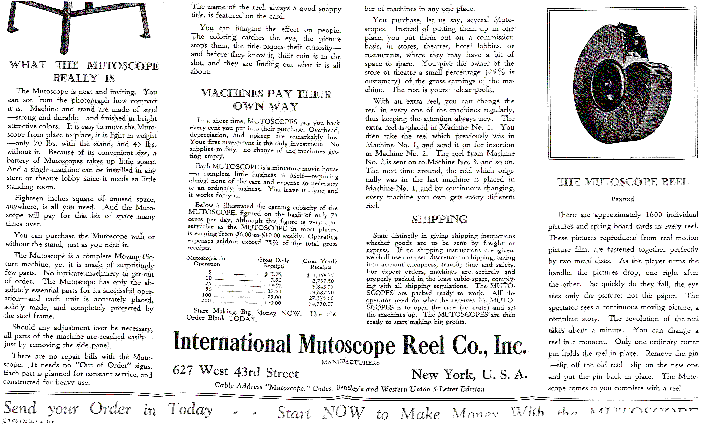
There was also another style of Mutoscope called the Mutoscope Selecto, available during the Bill Rabkin's era. This unit allowed the player to select from five different movie reels on a single mutoscope unit. Unfortunately the movie reels for the Selecto are smaller and "reversed" (the pictures would be backwards) compared to the standard Mutoscope movie reel. Hence when buying Mutoscope reels, make sure it's not a Selecto reel, because they don't fit in a standard Mutoscope movie viewer. The Selecto was a marketing failure too, probably because of the non-interchangable reels. The Selecto machine also did not look like a standard Mutoscope - it had a wooden case with a marque that displayed the five different movie titles.
The Mutoscope Selecto - player can
choose one of five different movies.
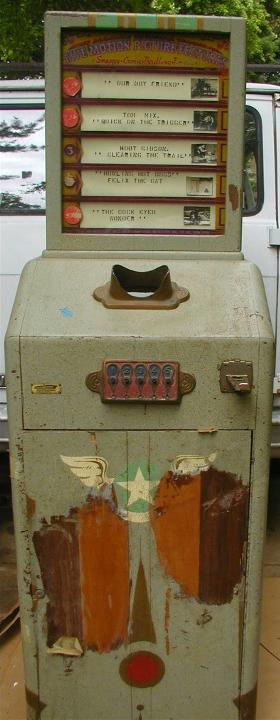
The inside of the five reel Selecto.
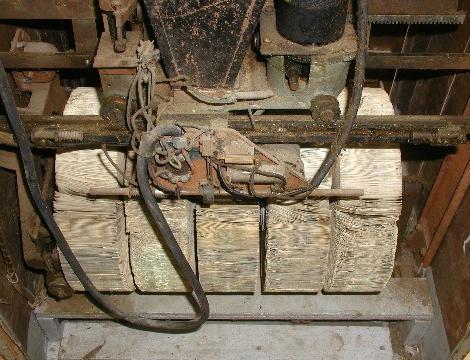
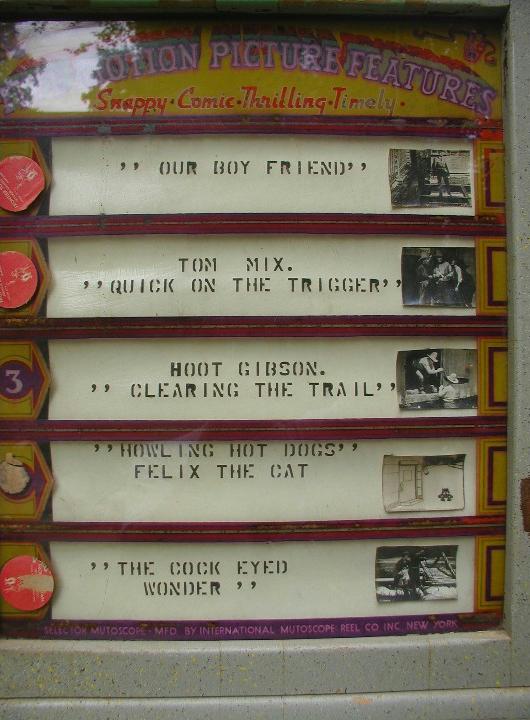
As far as mutoscope movie reels go, the earlier movies were generally the more "spicy" variety, sometimes with topless women. But when Rabkins bought Mutoscope in 1926, he largely policed himself and didn't release movie reels with naked women (though many were close, but no cigar!) Rabkin did however play up the idea that the Mutoscope could be a peep show viewer, using very racy and spicy titles. But the movies themselves never lived up to their titles. Of course other themes, like westerns and sports and comedy were popular. But the whole peep show mentality is what often kept Mutoscopes popular at arcades. The draw of new male patrons to put their money into a spicy Mutoscope title was hard to resist. Mike Munvies sold new Mutoscope reels for $35 in 1956, with a $7.50 allowance given for old reels, and used reals sold for $15.
Bill Rabkin era 1926 to WW2 style Mutoscope advertising - click to enlarge.
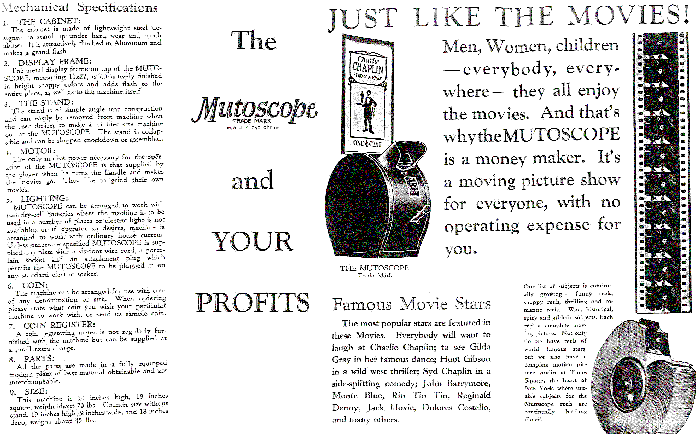
To give you some idea of all the movie titles available, here are the Rabkins era movies titles by number. All the 7000 series numbers are Rabkin 1926 and later movie reels. The number is usually stamped into the side of the metal casting on the movie reels.
